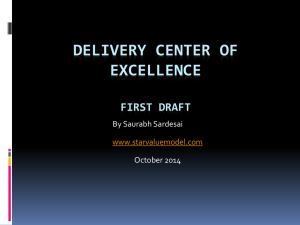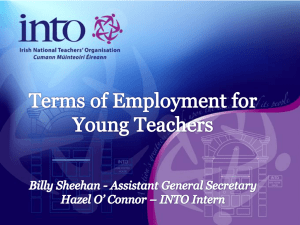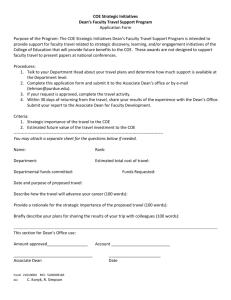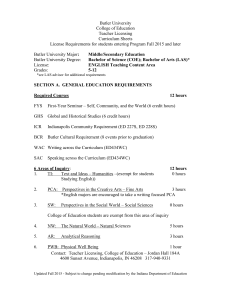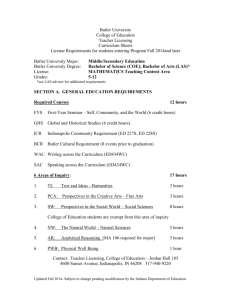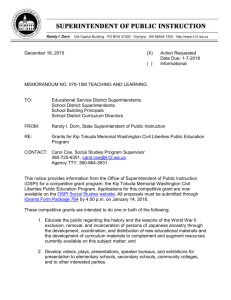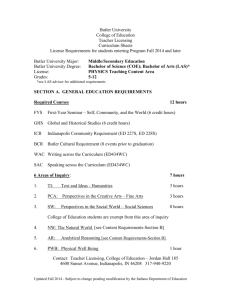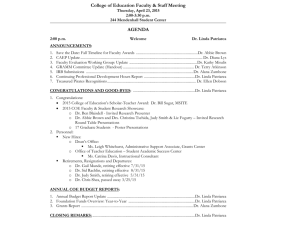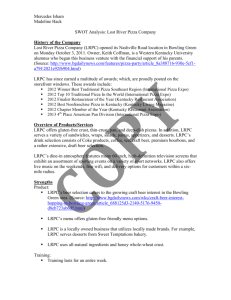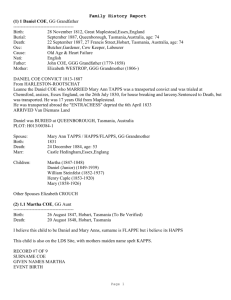Faculty Research Profile
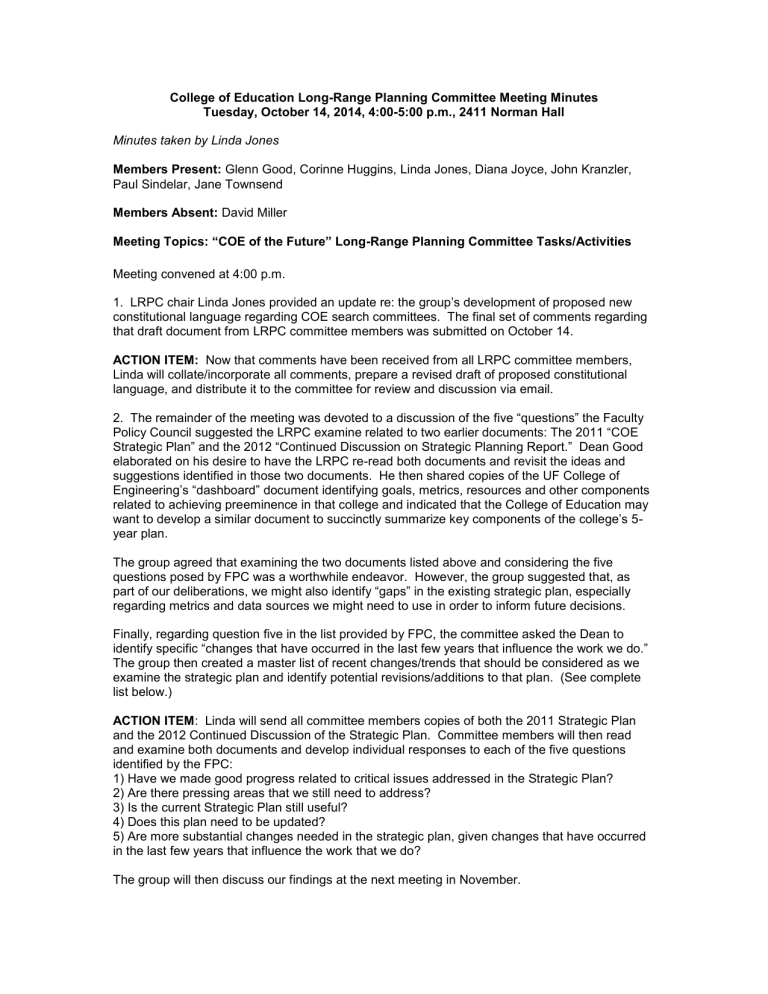
College of Education Long-Range Planning Committee Meeting Minutes
Tuesday, October 14, 2014, 4:00-5:00 p.m., 2411 Norman Hall
Minutes taken by Linda Jones
Members Present: Glenn Good, Corinne Huggins, Linda Jones, Diana Joyce, John Kranzler,
Paul Sindelar, Jane Townsend
Members Absent: David Miller
Meeting Topics: “COE of the Future” Long-Range Planning Committee Tasks/Activities
Meeting convened at 4:00 p.m.
1. LRPC chair Linda Jones provided an update re: the group’s development of proposed new constitutional language regarding COE search committees. The final set of comments regarding that draft document from LRPC committee members was submitted on October 14.
ACTION ITEM: Now that comments have been received from all LRPC committee members,
Linda will collate/incorporate all comments, prepare a revised draft of proposed constitutional language, and distribute it to the committee for review and discussion via email.
2. The remainder of the meeting was devoted to a discussion of the five “questions” the Faculty
Policy Council suggested the LRPC examine related to two earlier documents: The 2011 “COE
Strategic Plan” and the 2012 “Continued Discussion on Strategic Planning Report.” Dean Good elaborated on his desire to have the LRPC re-read both documents and revisit the ideas and suggestions identified in those two documents. He then shared copies of the UF College of
Engineering’s “dashboard” document identifying goals, metrics, resources and other components related to achieving preeminence in that college and indicated that the College of Education may want to develop a similar document to succinctly summarize key components of the college’s 5year plan.
The group agreed that examining the two documents listed above and considering the five questions posed by FPC was a worthwhile endeavor. However, the group suggested that, as part of our deliberations, we might also identify “gaps” in the existing strategic plan, especially regarding metrics and data sources we might need to use in order to inform future decisions.
Finally, regarding question five in the list provided by FPC, the committee asked the Dean to identify specific “changes that have occurred in the last few years that influence the work we do.”
The group then created a master list of recent changes/trends that should be considered as we examine the strategic plan and identify potential revisions/additions to that plan. (See complete list below.)
ACTION ITEM : Linda will send all committee members copies of both the 2011 Strategic Plan and the 2012 Continued Discussion of the Strategic Plan. Committee members will then read and examine both documents and develop individual responses to each of the five questions identified by the FPC:
1) Have we made good progress related to critical issues addressed in the Strategic Plan?
2) Are there pressing areas that we still need to address?
3) Is the current Strategic Plan still useful?
4) Does this plan need to be updated?
5) Are more substantial changes needed in the strategic plan, given changes that have occurred in the last few years that influence the work that we do?
The group will then discuss our findings at the next meeting in November.
Meeting adjourned at 4:52 p.m.
RECENT CHANGES/TRENDS TO CONSIDER WHEN E XAMINING THE COE “STRATEGIC
PLAN” AND “CONTINUED DISCUSSION OF THE STRATEGIC PLAN” DOCUMENTS
NOTE: These are not in any particular hierarchy or order. They are just listed in the order in which they were proposed by members of the LRPC.
• Decreasing pre-service educator enrollments in COE
• Increasing attacks on educators and the education profession (political, societal, etc.)
• Proliferation of teacher education programs in former “community colleges”
• Impact of the economic downturn on employment options for COE graduates
• Increased acceptance of alternate certification options for teachers in many states/districts
• Decreasing doctoral student enrollments in COE combined with continued decreases in funding options for education doctoral students
• Increasing teacher attrition, especially for beginning/early career teachers
• Decline of “working conditions” for K-12 educations (e.g., lack of tenure/job security, lack of pay raises/incentives for earning advanced degrees, salaries tied to st udents’ performance on highstakes assessments)
• Reduced availability of funding for educational research
• Significant increase in the need for highly qualified/professional teachers
• Increased need for quality professional development opportunities for teachers, especially teachers who enter the profession with no education coursework/background
• Increased competition of college of education with private “for-profit” teacher preparation providers
• Declining numbers of high school and college age students in the U.S.
• Increasing diversity of K-12 student populations/increases in the percentage of K-12 students living in poverty
